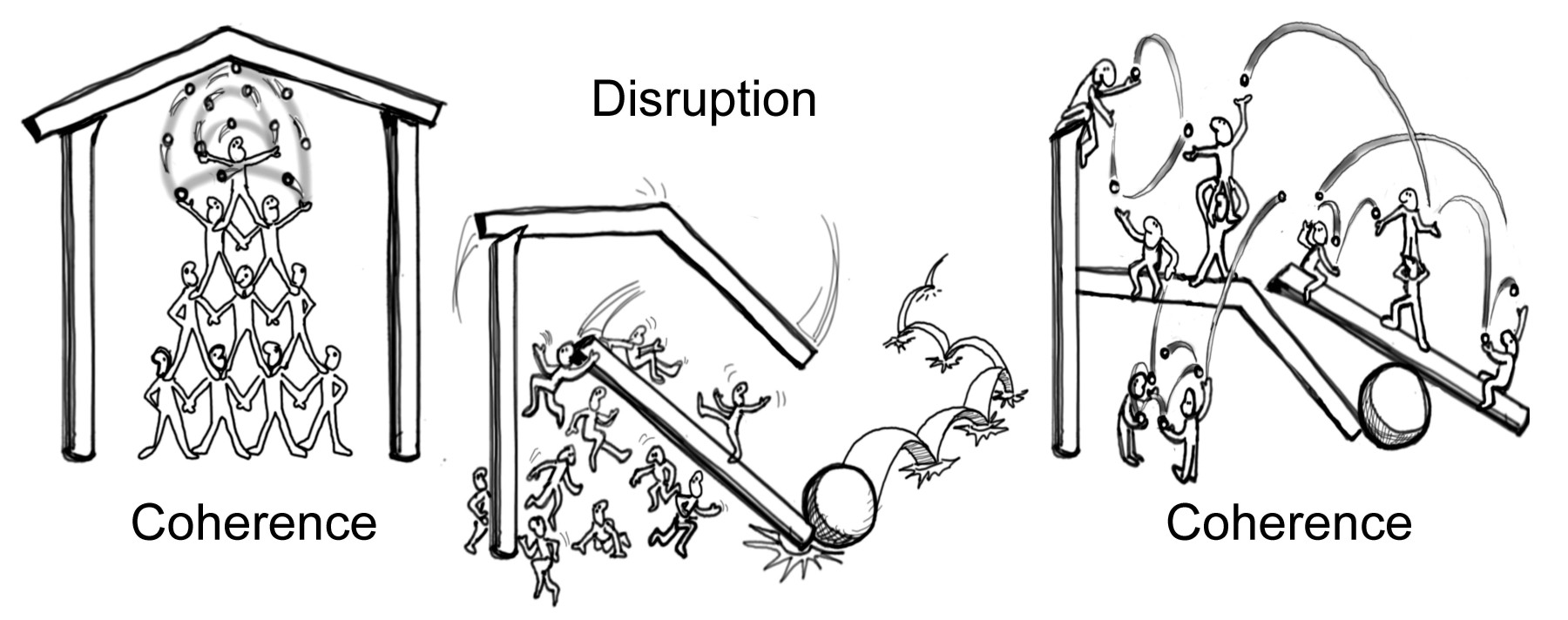A good question is never answered. It is not a bolt to be tightened into place but a seed to be planted and to bear more seed toward the hope of greening the landscape of ideas.
—John Ciardi, Manner of Speaking
The three questions below orient us to a fundamental pattern of change: disturb, differentiate, cohere. They help us to think strategically about how to work with change, particularly emergent change, by offering guidance on useful actions: disrupt, engage, and renew. The qualities that the questions suggest for those actions provide a philosophical context for achieving the best possible outcomes: compassion, creativity, and wisdom.
Like all appreciative questions, they direct our attention and open us to exploration. They are posed as questions rather than statements to remind us that when the terrain is uncertain, focus and fluidity both support us to be nimble in our response.
You can use them as you might an affirmation. Just as affirmations help us attend to what we wish to create, these questions help us adapt to the specifics of our situation. We can connect a pattern of change itself to our circumstances, by asking, “In this situation . . .”
- How do we disrupt coherence compassionately?
- How do we engage disruptions creatively?
- How do we renew coherence wisely?

Illustration by Steven Wright
How do we disrupt established patterns; explore the diverse, often conflicting aspects of our system; and discern the differences that make a difference so that coherence arises anew and serves us well?
These questions create temporary shelter in which we can consider the challenges of a changing system. They help us to experience and offer compassion in disruption, engage creatively with difference, and support both personal and collective renewal as potentially wise responses coalesce.
If you are familiar with Zen Buddhism, think of the questions as koans—paradoxical riddles or anecdotes that have no solution. If you seek to understand them in an intuitive way and work with them in your life, they may provide flashes of insight into what’s going on and how to engage it.
The three chapters that follow each elaborate on a question.
Back to the Table of Contents
On to Chapter 13. How Do We Disrupt Coherence Compassionately?

